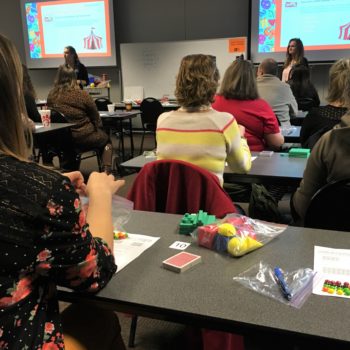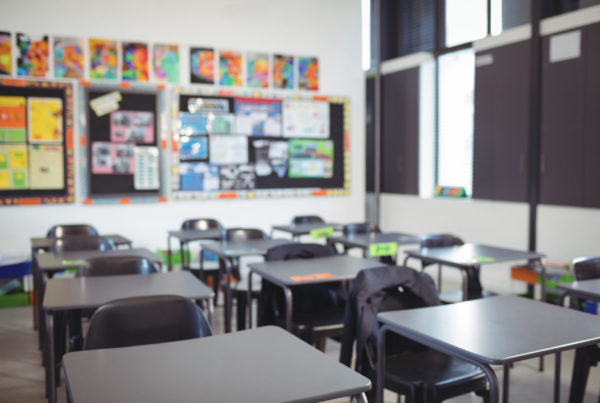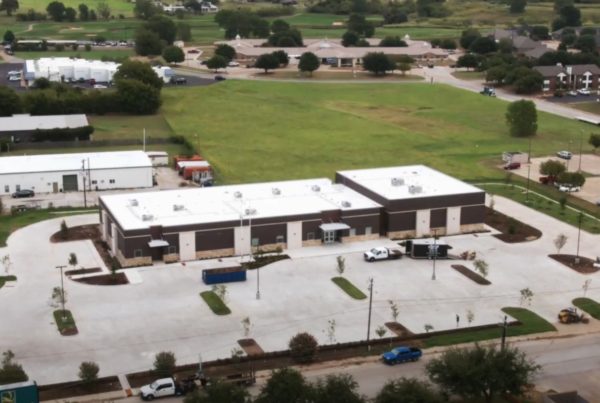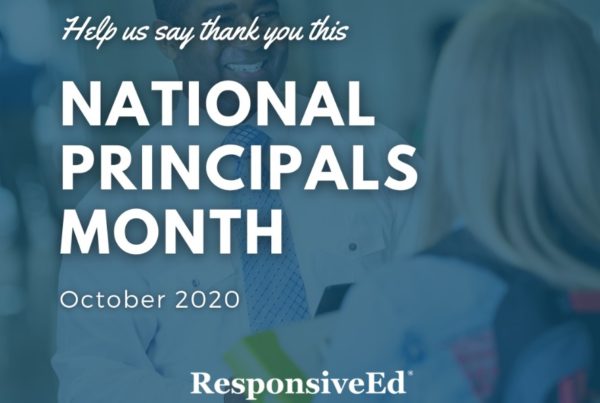Written by: Michelle Callis and Heather Schoenfeld, Directors of Math
Everyone loves a trip to the carnival! The smell of sweet and savory treats wafting through the air, the ping-and-ding of midway games, livestock mooing and baaing, dipping their heads for a friendly, child-size pat, and big semi-trucks with trailers that have been transformed into larger-than-life amusement rides all excite the heart. In this fun and enthusiastic spirit, Michelle Callis, ResponsiveEd district math director (K-5), and Heather Schoenfeld, ResponsiveEd district math director (6-12), set out to begin the second semester of this school year inspiring classroom math instruction for ResponsiveEd educators.
The Math Manipulative Roadshow 2019 was literally just that – a traveling roadshow. The idea was first birthed in the office of Bonnie Wimberley, director of teaching & instruction, where collaborations with the district math content directors were transpiring regarding how to strategically and effectively impact student math learning with best practices across the district. Michelle and Heather worked diligently, preparing well in advance, for maximum delivery. And on Monday, January 14, 2019, the two hit the road driving 850+ miles in the course of five days for outlying school campuses. Teachers at local school campuses within an hour drive commuted to the ResponsiveEd corporate office on Monday, February 18, 2019. The purpose of the math manipulative training was four-fold:
- To increase the use of Math manipulatives as a district
- To demonstrate effective use of specific Math manipulatives
- To stimulate teacher creativity with how Math manipulatives can be used
- To bring vertical alignment K-8 with the use of Math manipulatives
With their arrival in each town, Michelle and Heather encountered K-8 teaching staff eager to learn new instructional methods and sharpen current skills. There were plenty of big smiles to go around and a 360-degree virtual ride on a ferris wheel while carousel music played in the background. Teachers were treated with serving-size bags of fresh popcorn and gifted with free playing cards to use as math manipulatives in their classrooms with students. And at the close of the session, they received a live web link to a “refreshments” math manipulative resource packet with about 100 activities organized by manipulative type and concept to bring fresh strength to math teaching.

ResponsiveEd Directors of Math Heather Schoenfeld (front left) and Michelle Callis (front right) instruct a math manipulative activity.
The math manipulative teacher training promoted the use of a concrete-pictorial-abstract (CPA) approach, created by Jerome Bruner (1964), a psychologist from the United States, as an essential foundation to student learning. To learn more about this approach click here.
According to the research of Steven Hedden (1986), with long term use of manipulatives in mathematics, educators have found that students make gains in the following areas:
- Putting mathematical thinking into words that can be communicated in an effective manner which in turn spurs them to work collaboratively
- Finding ways to represent real-world situations symbolically using a variety of strategies
- Owning their own learning and becoming confident in their ability to come up with creative solutions to math problems without relying on the teacher
Like people participating in a ride at the carnival expecting a fun and safe ride, using math manipulatives requires specific guidelines and processes for effective and enjoyable functioning. Teachers were versed on the kinds of manipulatives available, such as within the district curriculum, and other effective manipulatives that can be found within the school environment, student homes, and digitally on the internet. Teachers also learned about important guidelines unique to both the teacher and student role for working with manipulatives. Teachers examined, discussed, and made connections to math content with the “Big Top Ten”, the 10 most effective math manipulatives every teacher should have access to for teaching math.
- Base 10 blocks/algebra tiles
- Uni/Unifix snap cubes
- Pattern blocks or attribute tiles
- Geometric solids
- Measurement devices
- Dice
- Playing cards
- Individual dry erase boards
- Plain paper & graph paper
- Colored highlighters or pencils
Hands-on, Socratic-style math lessons, like the ones listed below, were modeled with teacher participation (as students), as well as, tangible ways to make connections that bridge physical concept realities to more symbolic representations. It was during this part of the training session that Ashley Giuseppetti, response to intervention (RTI) coordinator at Founders Classical Academy of Schertz, felt like it really hit home for her in “how to address students with misunderstandings of mathematical concepts.”
- The Colors of the Carnival Skittles Activity
- Base Ten Blocks Roll & Race Gaming Activity
- Fantasy Figures Geometry Activity
Socratic learning emphasizes, “letting students explore (in this case, math manipulatives) first and letting them tell you what they observe,” said Julia Russell, sixth-grade math & science teacher at Tyler Classical Academy. Teacher responses to student observations is a critical element of creating a math-safe classroom, where every student can feel confident they are valued as a person and can make mistakes (and learn from them) without shame. Math manipulatives at every age are an important element in math-safe classrooms. Julia Russell went on to say that, “Even the middle and high school students still need manipulatives on some things; and, we need to teach them how to use them and have them available.” Ronald Morris, Tyler Classical Academy campus director grades 7-12, said he would support school staff by “encouraging teachers to use manipulatives and praising them when I see it in action.”
Teaching staff also became more familiar with 21st-century hands-on math materials, digital manipulatives, such as the ones found in the online version of the math curriculum and other online components with free public access like the National Library of Virtual Manipulatives.
 Teachers left the training inspired and enthusiastic about getting back to their classrooms and putting what they had learned into practice with their students. Jacquelyn Tabor, a fifth and sixth-grade math & science teacher at Crockett Classical Academy, took a proactive approach saying that she would be “incorporating manipulatives into my lesson plans”. Precious Hicks, a fifth-grade math & science teacher at Tyler Classical Academy, said she’d be, “using items outside of the classroom as math manipulatives to make the lesson more real world for the students.” Jaime West, a second-grade teacher at Jasper Classical Academy shared, “The different types and ways to use math manipulatives was very helpful.” Tina Drab, kindergarten teacher at Austin Classical Academy declared that the experience was a win-win for all!”
Teachers left the training inspired and enthusiastic about getting back to their classrooms and putting what they had learned into practice with their students. Jacquelyn Tabor, a fifth and sixth-grade math & science teacher at Crockett Classical Academy, took a proactive approach saying that she would be “incorporating manipulatives into my lesson plans”. Precious Hicks, a fifth-grade math & science teacher at Tyler Classical Academy, said she’d be, “using items outside of the classroom as math manipulatives to make the lesson more real world for the students.” Jaime West, a second-grade teacher at Jasper Classical Academy shared, “The different types and ways to use math manipulatives was very helpful.” Tina Drab, kindergarten teacher at Austin Classical Academy declared that the experience was a win-win for all!”
In conclusion, a carnival is a place of fun and fantasy, a place of wild imaginings, an atmosphere of thrill and curiosities. Math experiences, too, should be oozing with intrigue and opportunities for discovery and creativity. Yet, students should not be left in a fantasy world where math is only in their head. Students need tangible math, understanding that happens in their hands…. doing math rather than just thinking about doing Math.
Additional Resources:
Bruner, J. (1964). “The Cognitive Course for Growth”. American Psychologist, 19,
1: 1-15.
Heddens, S. (1986). “Bridging the Gap Between the Concrete and Abstract”. The Arithmetic Teacher, 33: 14-17. DOI 10.1037/h0044160
![]()




